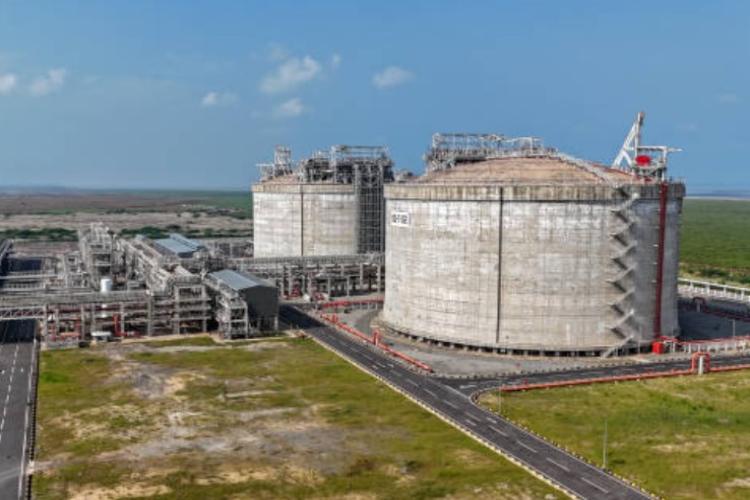
Faced with sluggish demand and mounting operational losses, the government is weighing a proposal to supply cheaper, domestically produced natural gas to trucks powered by liquefied natural gas. The move comes after state-run Indian Oil Corporation, the largest operator of LNG retail outlets in the country, was forced to shut down five of its six LNG stations due to lack of business.
The decision highlights the challenges India faces in promoting LNG as a cleaner alternative to diesel in its transport sector. Despite its environmental advantages, liquefied natural gas has struggled to gain traction amid high costs and limited infrastructure. With just one operational liquefied natural gas outlet remaining in Sriperumbudur, near Chennai, IOC has shelved the rollout of several ready-to-launch outlets, citing a shortage of LNG-fuelled trucks.
READ | Small retail vs e-commerce: Kirana stores struggle amid digital tsunami
LNG had once been touted as a sunrise industry in India’s energy sector. But with fewer than 20 operational LNG retail outlets nationwide, optimism has faded. To revive the segment, the government is now considering an allocation of 0.5 million cubic metres of gas per day—roughly 0.5% of India’s stagnant domestic gas output—to LNG retailing under the administered pricing mechanism (APM).
At $6.75 per mmBtu, APM gas is nearly half the cost of imported LNG. Officials note that the break-even point for LNG retailing is around $8-9 per mmBtu, substantially lower than current spot market prices. Industry estimates suggest the proposed allocation would be sufficient to fuel around 5,000 LNG trucks annually.
LNG trucking: Learning from China’s playbook
India currently has just 700 LNG trucks on the road—a stark contrast to China’s 900,000. The disparity extends to infrastructure as well. While India has fewer than 20 LNG outlets, China operates nearly 6,000 and plans to expand to 8,000 within the next few years.
China’s success is attributed to aggressive policy support, including subsidies that took effect in January 2025. Under the programme, heavy-duty truck owners can receive up to 110,000 yuan ($15,100) in exchange for scrapping their diesel vehicles and purchasing LNG-powered alternatives. India, by contrast, offers no such incentives for LNG trucking.
Indian industry leaders believe that with the right government support—including subsidies and tax incentives—the country could see 100,000 LNG trucks on its roads, significantly cutting transport emissions and increasing gas demand by approximately 11 mmcm/d.
Strategic shift amid US trade pressures
India’s renewed interest in liquefied natural gas also aligns with its broader energy and trade strategy. As the world’s fourth-largest liquefied natural gas importer, the country aims to increase the share of natural gas in its energy mix from the current 6.2% to 15% by 2030.
But the push is not just domestic. The United States, under the newly re-elected Trump administration, is reportedly pressuring New Delhi to ramp up energy imports from American producers. The US remains one of the few economies with which India maintains a trade surplus—a point of friction for Washington. Energy, particularly LNG, has emerged as a key area where the US hopes to narrow the gap.
In a bid to deepen energy ties and possibly ease bilateral tariff tensions, state-owned GAIL has invited expressions of interest to acquire up to a 26% stake in a US-based LNG liquefaction project, alongside a 15-year gas sourcing contract. The company is open to investing in either operational plants or those set to commence operations by 2030.
Last month, Oil Secretary Pankaj Jain confirmed that Indian firms—including GAIL, IOC, and Bharat Petroleum—were in advanced talks with US energy majors to secure additional LNG volumes. The United States is currently India’s second-largest LNG supplier, behind Qatar.
Timing Is everything
The government’s renewed focus on LNG-fuelled trucking coincides with these broader geopolitical developments. India has already pledged to increase its energy imports from $15 billion in 2024 to $25 billion in the coming years. Removing import duties on US-sourced LNG is also being considered to make American gas more price-competitive, potentially accelerating its adoption.
If successful, the dual-pronged strategy—making liquefied natural gas cheaper domestically while securing stable imports from the US—could give India’s struggling LNG infrastructure the shot in the arm it needs. It could also signal a strategic alignment between India’s energy transition goals and its evolving trade relationship with Washington.
As the government deliberates the allocation of cheaper gas and contemplates structural incentives for LNG trucks, the sector waits with cautious optimism. For now, the road to a cleaner, gas-fuelled future remains uncertain—but not out of reach.
